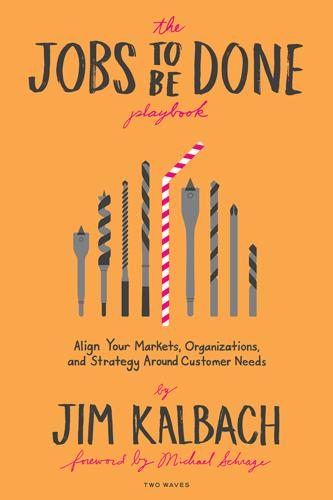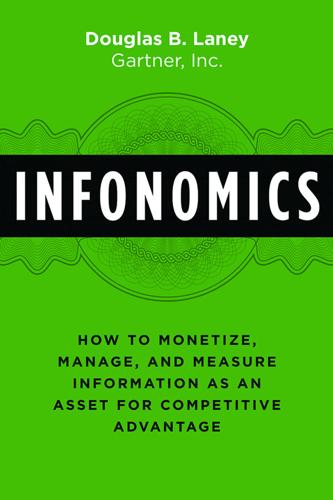
This Is Service Design Doing: Applying Service Design Thinking in the Real World: A Practitioners' Handbook
by
Marc Stickdorn
,
Markus Edgar Hormess
,
Adam Lawrence
and
Jakob Schneider
Published 12 Jan 2018
Further details of the program were developed with these leaders and a pilot customer journey workshop held on Service Management, a relationship management framework for internal customers. Similar workshops with other departments were set up within which customer journey mapping and employee journey mapping were key components. “Workshops with relevant stakeholders from the country organizations and a number of external customers typically take two days,” explains Tim Schuurman from DesignThinkers Academy. “We go through the standard service design approach, including persona identification, interviews with customers, customer journey mapping, and the ideation part, prototyping. Where customer journey mapping focuses mainly on improving the services provided to customers and business partners, employee journey mapping aims to create an environment for them to work in a customer-centric way.
…
It showed stakeholders where the gaps were and led to new ideas for action. Armed with our journey map and new service concepts, the organization received $200,000 in funding from the Office of the Mayor. That’s service design making an impact. Key Takeaways 01 A successful customer journey map includes gathering the right content (then editing that for clarity, conciseness, and priority). 02 A customer journey map provides a common tool and language for various organizations and exposed stakeholders to solve problems. 03 Applying an editorial lens to a journey map can help make a complex issue more approachable. Case: Current-State (as-is) and Future-State (to-be) Journey Mapping The bigger picture: Projects building up to more long-term and strategic value AUTHORS Geke van Dijk Strategy Director, STBY Ozlem Dessauer-Siegers Sr.
…
The results of this approach have led to a company-wide change program. The key added value of this approach is that customer journeys mapped for specific projects can be linked up to customer life cycles with a more strategic scope. In this way, service design contributes to strategic value for a business on a larger scale than just the individual customer journey projects. “Customer journeys linked up into a customer life cycle can deliver a more strategic overview with relevance to the wider organization.” — Ozlem Dessauer-Siegers, Sr. Service Experience Design Lead, Vodafone Customer journey maps illustrating as-is and to-be service experiences 56 Customer journeys are one of the key tools in the service design approach.

The Jobs to Be Done Playbook: Align Your Markets, Organization, and Strategy Around Customer Needs
by
Jim Kalbach
Published 6 Apr 2020
See solution architecture aspirations, as level of abstraction in JTBD, 33–35 assistant, as function in job ecosystem, 19–20 assumption personas, 100–101 attitudes, as driver, 100, 228 attraction, in Four Forces model, 65, 69–70, 182, 257 audience, as function in job ecosystem, 19–21 B backgrounds, as driver, 100, 228 Basecamp, 170 Bates, Sandra M., 14 BCG growth-share matrix, 202–203 behavior variables, creating personas, 97–98 Berstell, Gerald, 62, 64 Best Buy, 176 Bettencourt, Lance, 14, 29, 46, 72, 76, 78, 169, 258, 267 Beyer, Hugh, 58, 141, 148, 255, 265, 275–276 Bidsketch, 180–181 big jobs, as level of abstraction in JTBD, 33–34 Blank, Steve, 152, 153, 266 Boysen, Mike, 14, 38–39, 58, 163, 255 budget for interview incentives, 51 buyer, as function in job ecosystem, 19, 20 C Caldicott, Sarah Miller, 94 cancellation interviews, in customer retention, 178–181, 269 CarMax, 154–158 Christensen, Clayton, 4, 6, 14, 33, 104, 196, 197–198, 200, 211, 215, 218, 221, 256, 271, 273, 274 churn, 178–181 circumstances as driver, 99–100, 228 as element of JTBD, 18, 31, 32 hypothesis formation, 43–44 clarifier, 29 Clearleft, 79 Competing Against Luck (Christensen et al.), 33, 211 competing solutions, comparing, 103–108, 261 competitive analysis, 103–105 needs statements, 104–105 steps in the job process, 106–107 concept testing, combined with Switch interview, 79–81 Connors, Michael, 122, 127, 263 Constable, Giff, 58, 255 consumption journey, mapping, 163–169, 267 compared with job maps, 163 customer journey maps (CJMs), 164 steps, 165–168 consumptions jobs, 163, 267 Contextual Design (Beyer & Holtzblatt), 141, 144, 275–276 Cook, Scott, xiv, 103, 218, 274 Cooper, Alan, 96, 102, 260 Copernicus, Nicolaus, 15–17 corporate innovation strategy, 240 critical incident technique, 54, 60–61 customer case research (CCR), 62–64 customer-centricity, 17, 215, 224–225 The Customer-Driven Playbook (Lowdermilk & Rich), 149, 153 customer journey maps (CJMs), 163–169 customer retention, maximizing, 177–184, 269 cancellation interviews, 178–181 Fogg Behavior Model, 182–184 Four Forces technique, 181–182 root cause analysis, 180–181 subscription-based businesses, 177–178, 238–239 customer success team, 170 customer support, providing relevant, 186–188, 270 jobs-driven, 187–188 customers, successful onboarding of, 169–177, 268 onboarding scenarios, 172 pre-onboarding, sales example, 175–176 solution experience vs. job comprehension, 171–174 subscription-based services, 170 D data analysis in jobs interviews, 55–57 design thinking, and needs statements, 28, 134–136 desired outcome statements, 29 development roadmap, creating, 121–127, 263 compared with jobs stories, 132–133 defined with JTBD at MURAL, 246–250 product roadmaps, 122–126 Diffusion of Innovations (Rogers), 95, 185 direction of change, 29 discussion guide, 51–52 disruption defined, 196 surviving with JTBD, 197–200, 271 Doerr, John, 161 drivers (circumstances, attitudes, and backgrounds), 100, 228 Drucker, Peter, xviii, 4, 240 E Edison, Thomas, 94 elevator pitch, 244 email management system, 141–143 emotional jobs, 23–24, 26–27, 32 The End of Competitive Advantage (Gunther McGrath), 218–219 exit interviews, 178 experience design model, 138 F Facebook, 139 Farber, David, 14, 100, 108, 228, 231 focus areas, in UED, 144 Fogg, B.
…
It becomes a central structure for compiling insight and focusing team conversations. Using the main job, attend a conference as an example, the basic sequence could be visualized as shown in Figure 2.5. FIGURE 2.5 Visualize the process of getting a main job done. It’s critical to recognize that a job map is not a customer journey map. The aim is not to document how people come to your solution, decide to purchase, and stay loyal. That’s not their job to be done; it’s what your company wants them to do. Instead, a job map is a view into the behaviors and needs of individuals in the context of their daily lives. That may or may not include your solution.
…
Ultimately, JTBD guides the transition from understanding your customers to coming up with solutions they really want. A simple focus on the job to be done drives core decisions from planning to design and development to testing assumptions. CHAPTER 6 Delivering Value IN THIS CHAPTER, YOU WILL LEARN ABOUT THESE PLAYS: • How to create a customer journey map • How to make customers successful during onboarding • How to reduce churn • How to provide better customer support On December 3, 2001, the Segway was unveiled on the ABC News morning program Good Morning America. The first of the self-propelled transporters was delivered in early 2002.

Infonomics: How to Monetize, Manage, and Measure Information as an Asset for Competitive Advantage
by
Douglas B. Laney
Published 4 Sep 2017
Whether describing how the array of advanced analytics techniques can be applied to mine vast internal and external datasets, or explaining to data scientists the underlying data infrastructure complexity, or helping translate to the board how information manifests in company use cases, the information discipline is becoming the new language of the digital economy. The “speaking data” as a language is rarely recognized, but it is starting to be embraced as the new language of digital business. The rise of storytelling, customer journey maps, infographics, and visualization techniques signals the demand for an enhanced communications medium to convey the business impact of applying information to the business moments that matter most. The ability to speak this new language is a new organizational readiness factor: information literacy.